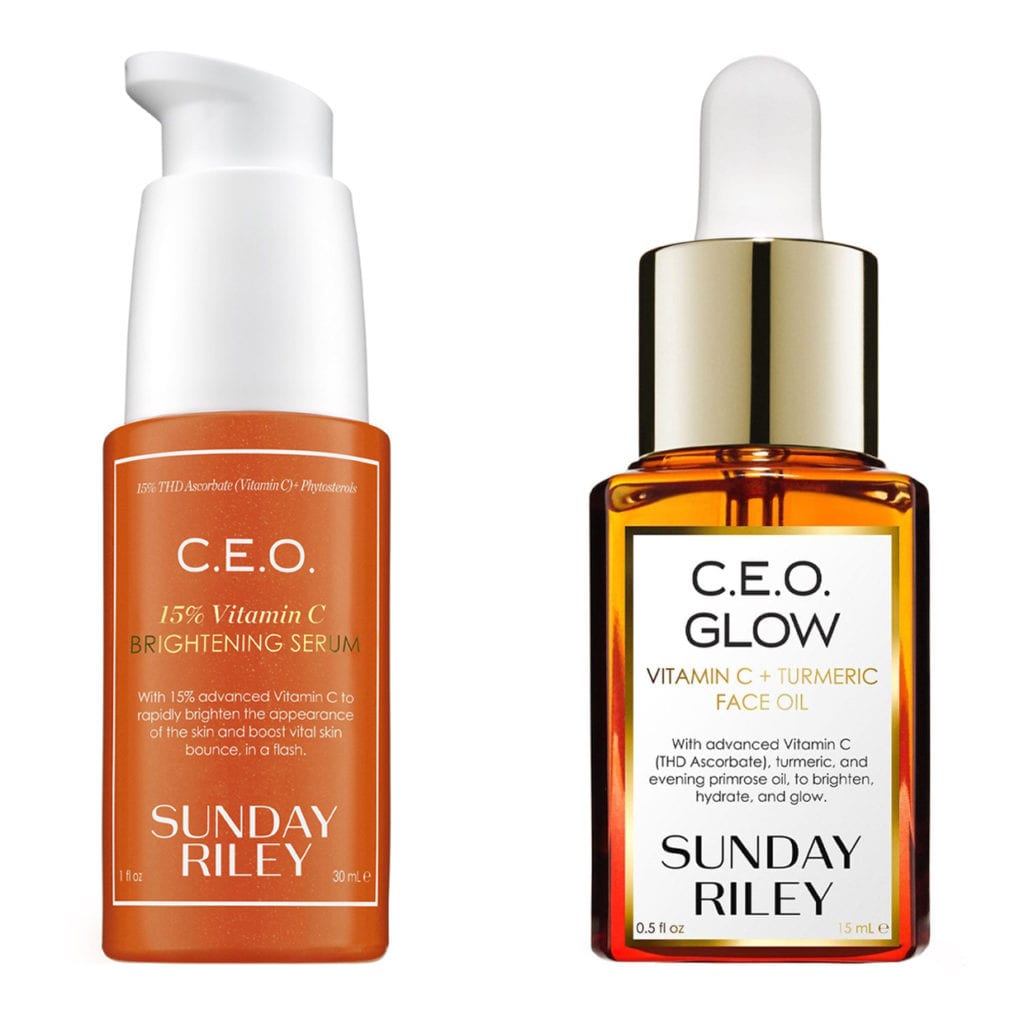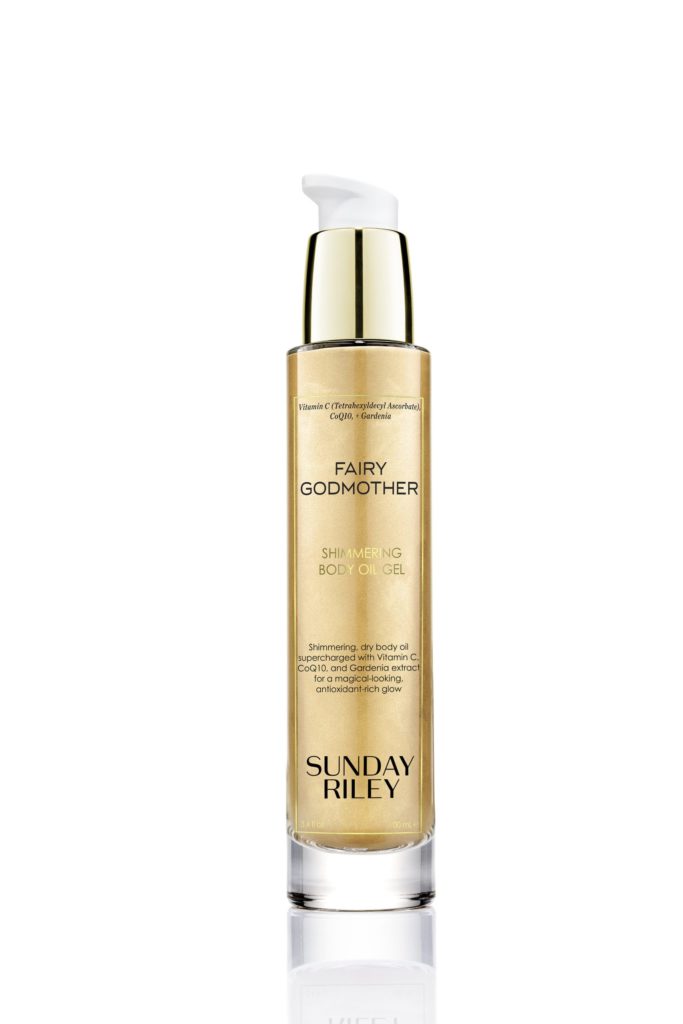As we approach fall and cooler temps, kudos to you for keeping up with your daily dose of head-to-toe sunscreen. (Oh, and if you’re not still wearing sunscreen every day, we make a case for it below.) It turns out, however, even though we’re bundling up and spending less time in the sunshine, sunscreen alone might not be enough to fight against sun damage and premature aging. That’s where vitamin C comes to the rescue. It’s one of those all-star ingredients that supercharge your sunscreen to help skin look its healthiest and best. Here, a dermatologist explains why you shouldn’t skimp on topical vitamin C even with the changing seasons — especially in your body care routine.
First of all, what is vitamin C?
“Vitamin C, or ascorbic acid, is a powerful free-radical fighting antioxidant that’s beneficial for all parts of the body, particularly those with more frequent sun exposure,” says Pooja Sodha, M.D., a board-certified dermatologist and director of the center for laser and cosmetic dermatologist at The GW Medical Faculty Associates in Washington, D.C. Clinical signs of sun exposure include wrinkles, laxity or loss of tone, and hyperpigmentation, as well as rough skin and an increased risk of developing skin cancers, she adds.
As an antioxidant, Sodha says vitamin C can help by “counteracting the cellular effects of UV and environmental factors,” which thereby reduces damage to the skin. “The benefit of topical vitamin C application is the delivery of it directly to the skin’s surface, where its effects can be most easily harnessed,” she explains. “Because it diminishes the effects of UVA and UVB rays, it can help improve pigmentation and increase collagen production deeper in the skin to enhance skin tone and laxity.”
Vitamin C also fights skin-damaging free radicals (aka the “environmental factors” Sodha mentioned above), such as the chemicals from cigarette smoke, air pollution, and industrial chemicals.

It’s worth noting that while vitamin C can aid in preventing sun damage due to its powerful antioxidant properties, it’s in no way shape or form a replacement for sunscreen. It does, however, help make your sun care more effective by adding an extra filter through which the sun’s harmful rays have to penetrate to get to our skin. So by all means, continue slathering your SPF on the daily — and don’t forget to reapply.
Why do you need it in your fall routine?
For starters, UV rays can easily penetrate clothing, as well as window glass, so just because we’re staying indoors and covering up more, doesn’t mean you should discount vitamin C from your skincare regimen. Take it from Sodha, who says: “Vitamin C is relevant not just for your fall routine, but your daily, all-year routine as it features several functions, including collagen synthesis, production of ceramides which support the skin barrier, and suppression of skin pigmentation. All of these can help to gently reverse sun damage accumulated during the summer months and thereafter.”
She recommends applying it once daily, in the morning, right after showering or before getting dressed. That, or you can apply it at night, too, to kick start the repair process.
What form of vitamin C is the best?
This is where things get a wee bit complicated, as Sodha says the challenge with vitamin C is that it’s readily oxidized when exposed to air, which makes it less potent upon opening or applying it to the skin.
Vitamin C, or ascorbic acid, is a powerful free-radical fighting antioxidant that’s beneficial for all parts of the body, particularly those with more frequent sun exposure
“The efficacy of vitamin C depends on the concentration and pH of the delivery of the serum or topical,” she says. “Stabilization can be achieved by combining vitamin C with other ingredients, such as ferulic acid or what’s known as tetrahexyldecyl ascorbate (THD ascorbate), another stabilized form of vitamin C that’s oil or lipid-soluble and thought to be more readily absorbed across the skin barrier.” THD ascorbate is significantly more stable than other forms of vitamin C, such as L-ascorbic acid. It helps fight the first signs of aging caused by stress, lifestyle, sun, and pollution.
Additionally, according to experts, you want to look for a formula with no less than eight percent concentration. “You want a vitamin C with a concentration higher than eight percent to ensure enough gets through the skin and into cells,” explains Adam Friedman, MD, a board-certified dermatologist based in Washington, D.C. “Studies have shown that a concentration above 20 percent does not increase its activity but could cause some irritation,” he adds. Oh, and don’t bother taking oral vitamin C, because according to Friedman, we pee it out because it’s water-soluble.
Simply slather on a healthy amount in the morning, and then follow up with SPF as it makes vitamin C more effective, according to Sodha.
Why do you need vitamin C in your body care?
This one is simple: for the same reason that you need vitamin C for your face. It helps minimize the damaging effects of UV and UVB rays, and thus reduces signs of premature aging.
“Sun exposure can lead to changes in the neck, chest, hands, forearms, and lower legs, so it can definitely be beneficial to use vitamin C on these areas, as well as the face,” says Sodha. Even when you’re fully clothed during cold-weather months, UVA rays can still penetrate through your clothing (even when it’s cloudy).
You can use the same skincare products on your face as you do on your body, but the benefits may take longer as the skin on your body is thicker. When it comes to body care, Sodha recommends looking for products that contain additional skin-loving ingredients, like hydrators and antioxidants, to help soothe and nourish the skin while you’re at it.








